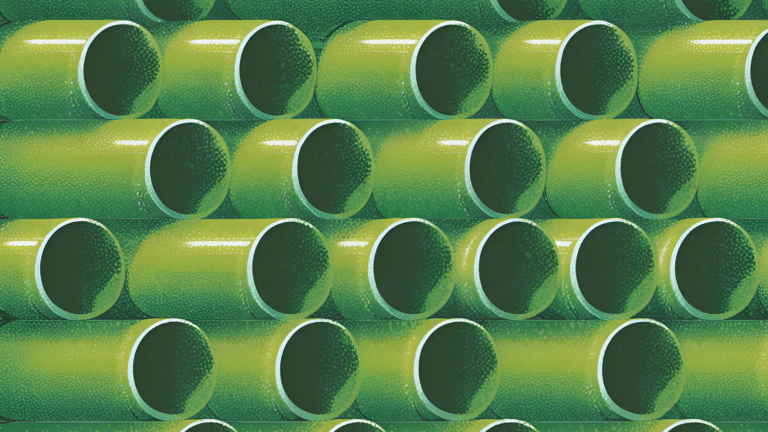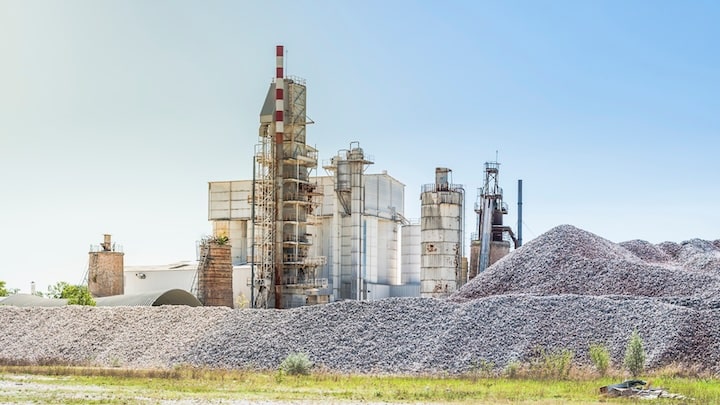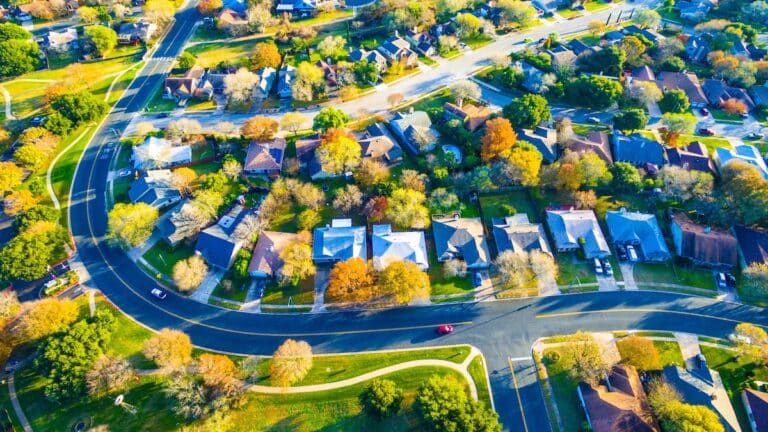The food system contributes more than 30% of the heat-trapping gases emitted by human activities globally each year.[1] If those emissions continue to increase at their current pace, meeting the Paris Agreement’s 1.5°C (2.7°F) goal would be impossible even if non-food system emissions fell to zero immediately.[2]
Food and climate impacts go both ways. Climate change creates significant risks to the food system, with rising temperatures and changing weather patterns threatening enormous damage to crops, supply chains and livelihoods in the decades ahead.[3]
The food system touches everyone. Hundreds of millions of people work in agriculture and other aspects of food production, with the highest percentages in developing countries.[4] More than a billion people, mostly women, prepare food as a central part of everyday activities.[5] Food choices play a central role in human health and culture.
This InfoGuide provides background on the food system (Part 1), climate change (Part 2), the impact of the food system on climate change (Part 3) and the impact of climate change on the food system (Part 4). The final section (Part 5) presents strategies for reducing emissions from the food system and improving the resilience of the food system to climate change.
The food system spans a vast array of activities—from land clearing to fertilizer manufacturing to crop growing to livestock production to fish harvesting to meal preparation to landfill management. It includes food production, transport, processing, packaging, storage, consumption and disposal.
A 2019 World Bank study estimated that the food system contributes $8 trillion per year to gross domestic product (GDP)—roughly 10% of the global economy.[7]
Roughly 35% of the world’s total land area excluding Antarctica is used for agriculture.[11]
The food system and energy system are deeply intertwined. Every part of the food system uses energy. Roughly 30% of global energy consumption comes from the food system.[15]
Over 40% of human calories come directly from three crops: rice, wheat and maize.[18] These three crops account for roughly two-thirds of all human calories (including rice, wheat and maize used as feed for livestock consumed by humans).[19] Soybeans have the fourth largest production area of all crops globally.[20]
In 2018, global livestock production neared 24 billion chickens, 1.5 billion heads of cattle, 1.2 billion sheep, 1 billion goats and 980 million pigs.[25]
In 2017, fish provided 17% of global animal protein intake and 7% of all protein consumed.[28]
More than 2.6 billion people lack access to clean cooking technologies, depending on biomass, kerosene or coal as their primary cooking fuel.[31]
The food system is plagued by distributional inequities.
Roughly one-third of food that is produced is never consumed. This food is either lost in the field on the way to the consumer or wasted in institutional settings, stores, homes or restaurants.[42]
The conversion of natural forests to produce food commodities is the single greatest driver of habitat loss globally.[47]
Atmospheric concentrations of heat-trapping gases are now higher than any time in human history. This is changing the Earth’s climate.[50]
Human activities are the principal cause of the buildup of heat-trapping gases in the atmosphere. Those activities include burning fossil fuels (coal, oil and gas) and land use change.[55]
The impacts of a changing climate are being felt across the globe.
The world is not on a path to meet globally-agreed climate change goals.
Billions of people face extraordinary risks unless the buildup of heat-trapping gases in the atmosphere slows and then reverses in the decades ahead.[62]
The IPCC estimates that the food system is responsible for 21%–37% of heat-trapping gases emitted by human activities globally.[65] A study published in Nature in March 2021 estimates that the food system is responsible for a third of heat-trapping gases emitted globally.[66] Work from the authors of this paper confirms that estimate.[67]
Forestry and land use changes related to the food system are responsible for between 5% and 14% of all anthropogenic emissions of heat-trapping gases.[68]
Pre-Production emissions include emissions associated with fertilizer and pesticide manufacturing and the production of farm equipment such as tractors and irrigation pumps. There is currently a dearth of country-level data on emissions from these sources.
Agriculture is a major source of methane and nitrous oxide emissions. Roughly half of anthropogenic methane emissions and three-quarters of anthropogenic nitrous oxide emissions come from within the farm gate.[71]
Fertilizers, rice paddies and on-farm energy use are each significant emissions sources.
Dietary choices play a large role in determining the amount of heat-trapping gases emitted from the food system.
Roughly 45% of total energy use by the food sector is attributable to food processing and distribution.[83]
Food transportation is responsible for roughly 6% of all food system emissions globally. (In the United States, the figure is 11%.)[86]
In developing countries, cooking often utilizes traditional low-efficiency stoves, which generate significant negative impacts on both climate and health.[89]
Per capita rates of food loss and waste have been rising globally, and the emissions associated with food loss and waste are accelerating in parallel.
The buildup of heat-trapping gases in the atmosphere suppresses global average crop yields. This is due to the effects of high temperatures on growing periods and critical growth stages, more severe droughts and storms, the spread of pests, and other factors.[94]
Increasing concentrations of heat-trapping gases in the atmosphere have negative impacts on the nutritional quality of globally important crops.
Such changes could have a negative impact on global health, as an estimated two billion people already suffer from dietary deficiencies of zinc and iron.[101]
Climate change is likely to increase malnutrition and lead to less healthy diets in lower- and middle-income countries.[102]
Dozens of strategies can help reduce emissions of heat-trapping gases from the food system and improve the resilience of the food system to climate change. Governments, companies, NGOs and individuals can all contribute. Options with high potential for impact are listed below.
Strategies for reducing emissions of heat-trapping gases from the food system are often divided into two broad categories: supply side and demand side. Supply-side strategies focus on land use, agricultural production and food distribution. Demand-side strategies focus on food consumption and consumer choice.[107]
Measurement and monitoring of the emissions impact of many of these strategies can be challenging. In addition, system effects must be considered before pursuing one of these strategies with the goal of reducing emissions. (Shorter food delivery supply chains can be counterproductive, for example, if food is grown in energy intensive greenhouses powered by fossil fuels.)
The potential for quick and cost-effective emissions reductions in this area is significant. The IPCC found with high confidence that roughly 3%–8% of global emissions of heat-trapping gases could be cut by 2030 with crop and livestock measures at costs in the range of $20–$100 t CO2-eq.[108]
The food system often relies on long supply chains that are vulnerable to climate disruption at many points. Policies to improve the climate resilience of the food system focus on ensuring a stable food supply and sustainable farmer livelihoods, as well as improving food availability and access.
Many policy tools are available to implement strategies such as the above. The choice of policy tools will vary from jurisdiction to jurisdiction, depending on local circumstances. Such tools include public funds for research and development, tax incentives, direct payments, regulatory standards, and education through agricultural extension services. Policies that focus on energy use more broadly (such as fuel efficiency standards for vehicles or energy efficiency standards for refrigerators) will also reduce food system emissions.[109]
Policies that help reduce emissions from the food system or improve food system resilience can have important benefits in other areas. These include the following:
The Food Climate Partnership is a joint effort of scholars at the Center on Global Energy Policy at Columbia University, the Agricultural Model Intercomparison and Improvement Project (AgMIP), and New York University. The Food Climate Partnership works to address knowledge gaps, promote better policies and improve public understanding of issues related to the food system and climate change. We work closely with experts at the Statistics Division of the Food and Agriculture Organization (FAO) of the United Nations to ensure that data on food systems are properly analyzed and communicated.
[5] Patricia Allen and Carolyn Sachs, “Women and Food Chains: The Gendered Politics of Food,” in Taking Food Public: Redefining Foodways in a Changing World, eds. Psyche Williams Forson and Carole Counihan (Routledge, 2012), 23–40.
[8] Mbow et al., “Food Security.”
[11] FAOSTAT, “Land Cover,” FAO, last modified September 10, 2020, http://www.fao.org/faostat/en/#data/LC. See also Hannah Ritchie, “Half of the World’s Habitable Land Is Used for Agriculture,” Our World in Data, November 11, 2019, https://ourworldindata.org/global-land-for-agriculture.
[13] Paolo D’Odorico, Lorenzo Rosa, Abinash Bhattachan, and Gregory S. Okin, “Desertification and Land Degradation,” in Dryland Ecohydrology, eds. Paolo D’Odorico, Amilcare Porporato, and Christiane Wilkinson Runyan (Springer, 2019), 573–602, https://doi.org/10.1007/978-3-030-23269-6_21.
[16] Alia Ladha-Sabur, Serafim Bakalis, Peter J. Fryer, and Estefania Lopez-Quiroga, “Mapping Energy Consumption in Food Manufacturing,” Trends in Food Science & Technology 86 (2019), 270–80, https://doi.org/10.1016/j.tifs.2019.02.034.
[17] FAO, “Energy-Smart” Food.
[20] Walter Fraanje and Tara Garnett, “Soy: Food, Feed, and Land Use Change,” Food Climate Research Network, University of Oxford, January 30, 2020; M. Shahbandeh, “Soybean production worldwide 2012/13–2019/20, by country,” Statista, January 26, 2020, https://www.statista.com/statistics/263926/soybean-production-in-selected-countries-since-1980/#statisticContainer.
[24] Fraanje and Garnett, “Soy”; Shahbandeh, “Soybean production worldwide.”
[27] UN Department of Economic and Social Affairs, “World Population Prospects.”
[34] Katherine L. Dickinson et al., “Research on Emissions, Air Quality, Climate, and Cooking Technologies in Northern Ghana (REACCTING): Study Rationale and Protocol,” BMC Public Health 15, no. 126 (February 2015), https://doi.org/10.1186/s12889-015-1414-1.
[35] Hannah Ritchie, David S. Reay, and Peter Higgins, “Beyond Calories: A Holistic Assessment of the Global Food System,” Frontiers in Sustainable Food Systems 2 (2018), doi.org/10.3389/fsufs.2018.00057.
[39] Walter Willett et al., “Food in the Anthropocene: The EAT–Lancet Commission on Healthy Diets from Sustainable Food Systems,” The Lancet 393, no. 10170 (February 2019), 447–92, https://doi.org/10.1016/S0140-6736(18)31788-4https://www.mayoclinic.org/diseases-conditions/obesity/symptoms-causes/s… Corinna Hawkes, Jody Harris, and Stuart Gillespie, “Changing Diets: Urbanization and the Nutrition Transition,” in 2017 Global Food Policy Report (International Food Policy Research Institute, 2017), 34–41, https://ideas.repec.org/h/fpr/ifpric/9780896292529-04.html.
[45] Silpa Kaza, Lisa Yao, Perinaz Bhada-Tata, and Frank Van Woerden, What a Waste 2.0: A Global Snapshot of Solid Waste Management to 2050 (Washington, DC: World Bank, 2018), https://openknowledge.worldbank.org/handle/10986/30317; Deborah M. Bartram and Sirintornthep Towprayoon, “Waste,” in 2019 Refinement to the 2006 IPCC Guidelines for National Greenhouse Gas Inventories, Volume 5, eds. E. Calvo Buendia et al. (Switzerland: IPCC, 2019), https://www.ipcc-nggip.iges.or.jp/public/2019rf/vol5.html.
[47] Abhishek Chaudhary, Stephan Pfister, and Stefanie Hellweg, “Spatially Explicit Analysis of Biodiversity Loss Due to Global Agriculture, Pasture and Forest Land Use from a Producer and Consumer Perspective,” Environmental Science & Technology 50, no. 7 (February 2016), 3928–36, https://pubs.acs.org/doi/10.1021/acs.est.5b06153; IPBES, Global Assessment Report on Biodiversity and Ecosystem Services: Summary for Policymakers (Bonn: IPBES Secretariat, 2019), 28, https://ipbes.net/sites/default/files/inline/files/ipbes_global_assessme… FAO, State of the World’s Biodiversity for Food and Agriculture, eds. J. Bélanger and D. Pilling (Rome: FAO Commission on Genetic Resources for Food and Agriculture Assessments, 2019), http://www.fao.org/3/CA3129EN/ca3129en.pdf.
[49] Chaudhary, “Spatially Explicit Analysis,” 3928–36.
[50] Valérie Masson-Delmotte et al, ”Information from Paleoclimate Record,” in Climate Change 2013: The Physical Science Basis—Contribution of Working Group I to the Fifth Assessment Report of the IPCC, eds., T.F. Stocker et al. (Cambridge: Cambridge University Press, 2013), 385, https://www.ipcc.ch/report/ar5/wg1/information-from-paleoclimate-archives/https://climate.nasa.gov/climate_resources/7/graphic-carbon-dioxide-hits… IPCC Working Group I, ”Summary for Policymakers,” in Climate Change 2013: The Physical Science Basis—Contribution of Working Group I to the Fifth Assessment Report of the IPCC, eds. T.F. Stocker et al. (Cambridge: Cambridge University Press, 2013), https://www.ipcc.ch/site/assets/uploads/2018/02/WG1AR5_SPM_FINAL.pdf.
[51] IPCC Working Group I, “Summary for Policymakers.”
[58] IPCC Working Group I, “Summary for Policymakers.”
[59] Michael Goss et al., “Climate Change Is Increasing the Likelihood of Extreme Autumn Wildfire Conditions across California,” Environmental Research Letters 15, no. 9 (August 2020), https://doi.org/10.1088/1748-9326/ab83a7.
[64] Nick Watts et al., “The 2020 Report of The Lancet Countdown on Health and Climate Change: Responding to Converging Crises,” The Lancet 397, no. 10269 (January 2021), 129–70, https://doi.org/10.1016/S0140-6736(20)32290-X; Xiaoxu Wu, Yongmei Lu, Sen Zhou, Lifan Chen, and Bing Xu, “Impact of Climate Change on Human Infectious Diseases: Empirical Evidence and Human Adaptation,” Environment International 86 (January 2016), 14–23, https://doi.org/10.1016/j.envint.2015.09.007.
[65] Mbow et al., “Food Security.”
[67] Tubiello et al., “Greenhouse Gas Emissions from Food Systems.”
[68] Ibid.; Francesco N. Tubiello, “Greenhouse Gas Emissions Due to Agriculture,” in Encyclopedia of Food Security and Sustainability, eds. Pasquale Ferranti, Elliot M. Berry, and Jock R. Anderson (Elsevier, 2019), 196–205, https://doi.org/10.1016/B978-0-08-100596-5.21996-3; Crippa et al., “Food Systems Are Responsible.”
[69] Sarah Carter et al., “Agriculture-Driven Deforestation in the Tropics from 1990–2015: Emissions, Trends and Uncertainties,” Environmental Research Letters 13, no. 1 (December 2017), https://doi.org/10.1088/1748-9326/aa9ea4.
[71] Tubiello, “Greenhouse Gas Emissions Due to Agriculture.”
[73] Mbow et al., “Food Security.”
[74] FAO, “Emissions Due to Agriculture.”
[77] Tubiello et al., “Greenhouse Gas Emissions from Food Systems.”
[79] IPCC, Climate Change 2014: Synthesis Report, Contribution of Working Groups I, II and III to the Fifth Assessment Report of the Intergovernmental Panel on Climate Change, eds. R. K. Pachauri and L. A. Meyer (Geneva: IPCC, 2014), 151, https://www.ipcc.ch/report/ar5/syr/.
[80] Hannah Ritchie, “You Want to Reduce the Carbon Footprint of Your Food? Focus on What You Eat, Not Whether Your Food Is Local,” Our World in Data, January 24, 2020, accessed November 9, 2020, https://ourworldindata.org/food-choice-vs-eating-local; J. Poore and T. Nemecek, “Reducing Food’s Environmental Impacts through Producers and Consumers,” Science 360, no. 6392 (June 2018), 987–92, https://science.sciencemag.org/content/360/6392/987.
[81] Poore and Nemecek, “Reducing Food’s Environmental Impacts.”
[83] Ladha-Sabur, Bakalis, Fryer, and Lopez-Quiroga, “Mapping energy consumption.”
[85] Crippa et al., “Food Systems Are Responsible,” note 38.
[87] Ritchie and Roser, “Environmental Impacts of Food Production.”
[88] Tubiello et al., “Greenhouse Gas Emissions from Food Systems.”
[89] Paul Wilkinson et al., “Public Health Benefits of Strategies to Reduce Greenhouse-Gas Emissions: Household Energy,” The Lancet 374, no. 9705 (December 2009), 1917–29, https://doi.org/10.1016/S0140-6736(09)61713-X; Dickinson, “Research on Emissions.”
[91] Hyunji Im and Yunsoung Kim, “The Electrification of Cooking Methods in Korea—Impact on Energy Use and Greenhouse Gas Emissions,” Energies 13, no. 3 (2020), 680, https://doi.org/10.3390/en13030680.
[93] 28 megatonnes of CH4 from solid food waste (Tubiello et al., “Greenhouse gas emissions from food systems”) is 8% of the 359 megatonnes of total anthropogenic CH4, as seen in Marielle Saunois et al., “The Global Methane Budget 2000–2017,” Earth System Science Data 12, no. 3 (July 2020), https://doi.org/10.5194/essd-12-1561-2020.
[94] Mbow et al., “Food Security.”
[95] Toshichika Iizumi et al., “Crop Production Losses Associated with Anthropogenic Climate Change for 1981–2010 Compared with Preindustrial Levels,” International Journal of Climatology 38, no. 14 (August 2018), 5405–17, https://doi.org/10.1002/joc.5818.
[96] See, e.g., Tao et al., “Responses of Wheat Growth and Yield to Climate Change in Different Climate Zones of China, 1981–2009,” Agricultural and Forest Meteorology 189–190 (June 2014), 91–104, https://doi.org/10.1016/j.agrformet.2014.01.013, cited in Mbow et al., “Food Security,” 452.
[99] Challinor et al., “A Meta-Analysis of Crop Yield.”
[102] Mbow et al., “Food Security.”
[103] John F. Morton, “The Impact of Climate Change on Smallholder and Subsistence Agriculture,” Proceedings of the National Academy of Sciences of the United States of America 104, no. 50 (December 2007), 19680–85, https://doi.org/10.1073/pnas.0701855104.
[105] Simon J. Lloyd, R. Sari Kovats, and Zaid Chalabi, “Climate Change, Crop Yields, and Undernutrition: Development of a Model to Quantify the Impact of Climate Scenarios on Child Undernutrition,” Environmental Health Perspectives 119, no. 12 (December 2011), 1817–23, https://doi.org/10.1289/ehp.1003311.
[107] Mbow et al., “Food Security.”
[113] A. Steensland, 2020 Global Agricultural Productivity Report: Productivity in a time of pandemics, ed. T. Thompson (Virginia Tech College of Agriculture and Life Sciences, 2020).
[114] Dietrich Knorr, Chor San Heng Khoo, and Mary Ann Augustin, “Food for an Urban Planet: Challenges and Research Opportunities,” Frontiers in Nutrition 4, no. 73 (January 2018), https://doi.org/10.3389/fnut.2017.00073.













